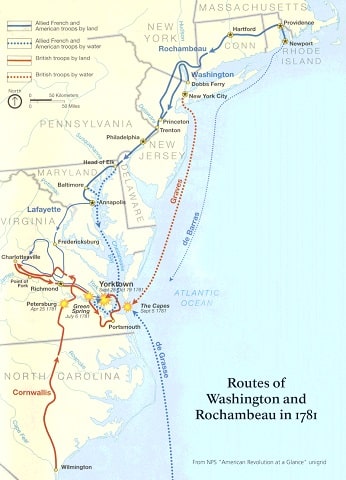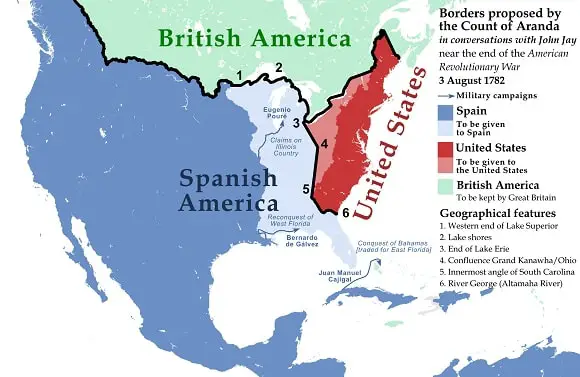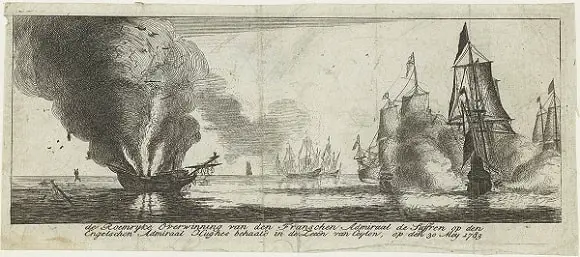The American Revolution was a critical political revolution in British America between 1765 and 1791.
The Thirteen Colonies revolted and warred against Great Britain in the American Revolutionary War, 1775–1783, attaining liberty from the British Crown and its jurisdiction.
The United States of America was secured from Britain as the first Federal republic around the globe.
The uprising began with the American colonists’ dissatisfaction with being taxed by the British Parliament, in which they had no direct representation. The Thirteen Colonies were governed by their colonial legislature on a local level.
The colonies that had enjoyed a prominent autonomous rule in matters regarding their internal affairs before the 1760s objected to the impositions being levied on them.
The enactment of the Stamp Act of 1765, whose terms imposed direct taxes on official documents and newspapers printed in the colonies, resulted in colonial protest and the meeting of representatives of several colonies to revoke the act.
The uprising boldened with the passage of the Townshend Acts in 1767, followed by the Tea Act in 1773.
Battles began on April 19, 1775, with the British plot to destroy militia ordnance stored at Concord, Massachusetts, and capture John Hancock and Samuel Adams. They are believed to be the principal provokers of the revolutionary movement.
While the final battle between the British Army and the Continental Army took place in October 1781, at Yorktown, Virginia, the American Revolution lasted until 1783.
The Treaty of Paris, signed on September 3, 1783, by the representatives of King George III of Britain and the United States of America, officially brought the war to an end.
The British recognized America’s independence and renounced all land north of Florida, south of Canada, and east of the Mississippi River to the Americans.
This 8-year war included other belligerent nations as allies of the warring parties. The American colonists had allies who assisted them through the war by providing supplies, weapons, military leaders, and soldiers.
America did not fight the Revolutionary War for independence by itself, and these allies played a significant role in helping the nation establish itself as a liberal state.
Several European countries furnished the colonists with essential aid; however, the prime allies of the Americans were France, Spain, and the Netherlands.
Underneath, we discuss the vital colonial allies during the American Revolution and the war that followed the uprising.
Was the American Revolution a civil war?
Content
The revolution was called a civil war throughout its first year, which changed in 1776 after South Carolina’s chief justice, William Henry Drayton, used the term ‘American Revolution.’
The term did more justice to the elongated engagement that included the war and the period before and after the war.
Why did the British lose America?
The British were aware of the difficulty of the task of regaining colonial territories back through the war. The American colonies covered a substantially large territory and had resources and assistance.
The British restricted resources and a negligible amount of support from other nations. The result of the war was inevitable and American victory was not surprising.
What were the weapons used in the American Revolutionary War?
The most common weapons used by the soldiers during the Revolutionary War included muskets, pistols, rifles, long rifles, knives, bayonets, tomahawks, axes, swords, sabers, polearms, and cannons.
The troops carried equipment like shot molds, tinder lighters, and cartridge boxes.
France

The principal ally of the American colonies was France. The nation became involved in the revolutionary war in 1776, the year following the outbreak of the war.
French support significantly contributed to the United States’ eventual victory and successful independence in the war.
During the early engagements of the war, France assisted the colonists by the ample supply of gunpowder, cannons, clothing, and shoes to the Continental Army.
Monetary support was also extensively provided as a part of the assistance. The French supplied a hefty chunk of the war arms used by America in the war.
France joined the Revolutionary War in 1778. On February 6, 1778, France and America formally recognized a defensive alliance by signing the Treaty of Alliance.
This treaty was signed right after the Treaty of Amity and Commerce. France became the first nation to recognize the United States of America as a sovereign country.
The defeat and loss of its American colonies to Britain at the end of the Seven Years’ War in 1763 had quelled unrest among the French. The desire to regain the land lost pushed the nation’s involvement in the revolution.
Despite the almost seven-year-long engagement, the country remained a global power with a powerful army and navy.
The French and British were former rivals as they were subject to periodic conflicts constantly. France chose to ally with the American Revolutionaries. The ideology behind the rebellion and the strong opposition of the united colonies impacted the French.
The view of human society, rationalism, science, and progress that accompanied the uprising led to the French envisioning the American states as the embodiment of some of these new ideas.
With the motive of seizing the previously lost territory and being impressed by the vision of the revolution, France made a direct entry into the war after two years of passive support.
The British declared war on France on March 17, 1778. The Battle of Ushant was the first naval engagement between the French and British on July 27, 1778.
The French navy played an essential role in the war and was the prime force that induced the British surrender at Yorktown on October 19, 1781, effectively ending the war.
The French troops were involved in numerous prime campaigns, including the Battle of Grenada and the Battle of the Virginia Capes.
The victory of the newly formed republic of America over the British was significantly possible through the assistance France provided.
Starting from using French weapons and wearing French-made uniforms, the Continental Army was fighting alongside French soldiers by the war’s end.
The French military and naval fleet battled the British alone, with no American forces involved, in some revolutionary battles during the war.
The French and British forces fought worldwide, from Asia and Africa to the Caribbean. France displayed a notable belligerency that challenged the British performance in the revolutionary war.
With victory in the Battle of Yorktown, the Franco-American alliance successfully brought upon British surrender after the elongated war.
Even though the Treaty of Paris marked the war’s end, the revolutionary movement continued after the war was over.
The ideas about liberty and equality behind the American Revolution helped inspire the French Revolution and independence movements in French colonies in 1789.
Spain

Spain was another essential ally to the colonists, and the nation provided great aid to America before its direct entry into the war as a co-belligerent.
The nation assisted the rebels beginning in 1776 with the supply of critical military supplies through four significant routes.
Smuggling of war supplies to the Continental army from New Orleans also started the same year.
With its hands complete from the ongoing Spanish-Portuguese war, Spain opted to provide necessary aid to the Americans without getting involved in the war officially.
After the end of the war regarding territorial disputes with the Portuguese on October 1, 1777, the nation shifted its focus toward the revolutionary war.
After essential considerations and military preparations, Spain signed the Treaty of Aranjuez on April 12, 1779, and entered the war.
The treaty’s terms affirmed Spain’s complete support to France in its war with Britain for assistance in regaining formerly lost territory of Menorca, Gibraltar, and Spanish Florida.
Spain declared war on Britain on May 8, 1779, as an ally of France. The nation followed up with another declaration on July 8, 1779, that allowed the colonial subjects of Spain to engage in hostilities against the British.
Although the nation did not associate with America directly, its entry into the war supplemented the rebels with a solid military force backing them up.
The flourishing diplomatic relations of Spain with France and its geopolitical interests contributed to the nation’s entry into the war.
The chance to regain Gibraltar and Menorca under British control, and the agreement to get the repossession of Louisiana, which France held, influenced Spain to side with the Franco-American alliance.
Spain’s military power contributed significantly to some of the war’s most effective campaigns and attacks.
With its formal entry into the revolutionary war, Spain began its most extended engagement in the war, the siege of Gibraltar. The Franco-Spanish forces together made the invasion of Minorca a success.
The governor of Spanish Louisiana, Count Bernardo de Gálvez, had been plotting actions for an attack against the British since April as he anticipated Spain’s entry into the war.
He led a series of successful offensives against the British forts in the Mississippi Valley, attaining success in the Capture of Fort Bute.
The Battle of Pensacola and the siege of Yorktown were two successful operations in which Spanish forces fought.
Spain’s significance in the Revolutionary War was recognized widely as the nation had chosen to enter the conflict despite the idea of independence it could have brought upon its colonies.
With the end of the American Revolution, new revolutions emerged in nearly a dozen Spanish colonies in Central and South America.
Led by Liberators, who were inspired by the ideology of liberty and equality that began during the American Revolution, the revolution inspired Latin American wars of independence from Spain and Portugal.
The Americans benefited notably, with Spain as a supporting nation providing much-needed military aid and troop support.
Netherlands

The Netherlands had created an unallied position globally when it maintained its neutrality in the Seven Years’ War. This position that the nation had secured changed with the republic’s involvement in the Revolutionary War.
The nation began assisting the American colonies early in 1774 with essential military supplies.
The decades-long relationship between the Dutch merchants and their American colleagues influenced the republic’s position in the war.
The revolution placed the Netherlands in a state of difficulty as the nation could not afford to help the rebels in their pursuit, but the wealthy merchants could.
The supply of ships full of gunpowder, muskets, and cannonballs to America began in the initial stages of the war.
Without choosing a side formally, the Dutch continued to ship military aid and provide loans to the colonists. The trading of war materials benefited both parties, and the merchants continued the trade with the American Revolutionaries and the French.
The British’s skepticism about the republic’s neutrality grew after France joined the American Revolutionary War in 1778.
While conducting continuous trading and supplying materials to the rebels, the Dutch denied any such activity when inquired about it. The British response came with more aggressive searching and seizing of Dutch ships.
When the Netherlands joined the Russian-sponsored League of Armed Neutrality to protect such shipments, Britain declared war on the republic in December 1780.
Only after this declaration did the republic lose its position of neutrality on paper. The British and the Dutch War became known as the Anglo-Dutch War.
It outlasted the Revolutionary War, going on until 1784. The war caused significant damage to the Dutch as the British acted offensively.
They seized numerous Dutch ships and shipments, bringing a pause to the nation’s overseas trade almost wholly. The British took over fortified Dutch ports in India and Ceylon and all Dutch forts and lodges in West Africa.
Dutch settlements in Guiana and dozens of Dutch East Indies were captured. The most damaging engagement was undoubtedly confiscating cash, ships, and property by the British naval force after the Dutch at St. Eustatius Island surrendered.
The assistance the republic provided the Americans was beyond material contributions and moral and political support.
On the Caribbean Island of St. Eustatius, cannons owned by the Dutch West India Company gave the first international salute to the flag of the United States of America in 1776.
The Dutch became the second country to officially provide recognition to America as a newly established republic in 1782.
The republic’s support displayed even after the revolutionary movement was remarkable and established good diplomatic relations between the two countries.
Conclusion
The American Revolution was a crucial movement, and the war it inflicted was undoubtedly a significant global conflict.
Battles being fought in various parts of the world, including North America, the Caribbean, and Europe, expanded their impact globally.
Assistance was provided to the British by the Loyalists, who constituted the loyal Native American tribes, and even Hessian troops from several German principalities.
A larger group of nations supported the American Patriots, including principal European Powers like France, Spain, the Dutch Republic, and fellowmen of various other European nations.
Considering Britain as an opponent from way before the revolution, nations like France and Spain saw this as an opportunity to achieve vengeance against the British.
The loss that fell upon them at the end of the Seven Years’ War against Britain was an influential factor contributing to their active participation and entry into the war.
Nations allying with the United States had varied interests, from fulfilling a personal geopolitical agenda to gaining a new trade and commerce partner.
Some officers who assisted the United States related to the American fight for independence on an ideological level and wanted to be a part of their journey to independence.
Nevertheless, the allies of America helped the nation achieve victory in the war, and without external support, it would have been a tough call for the colonists.
